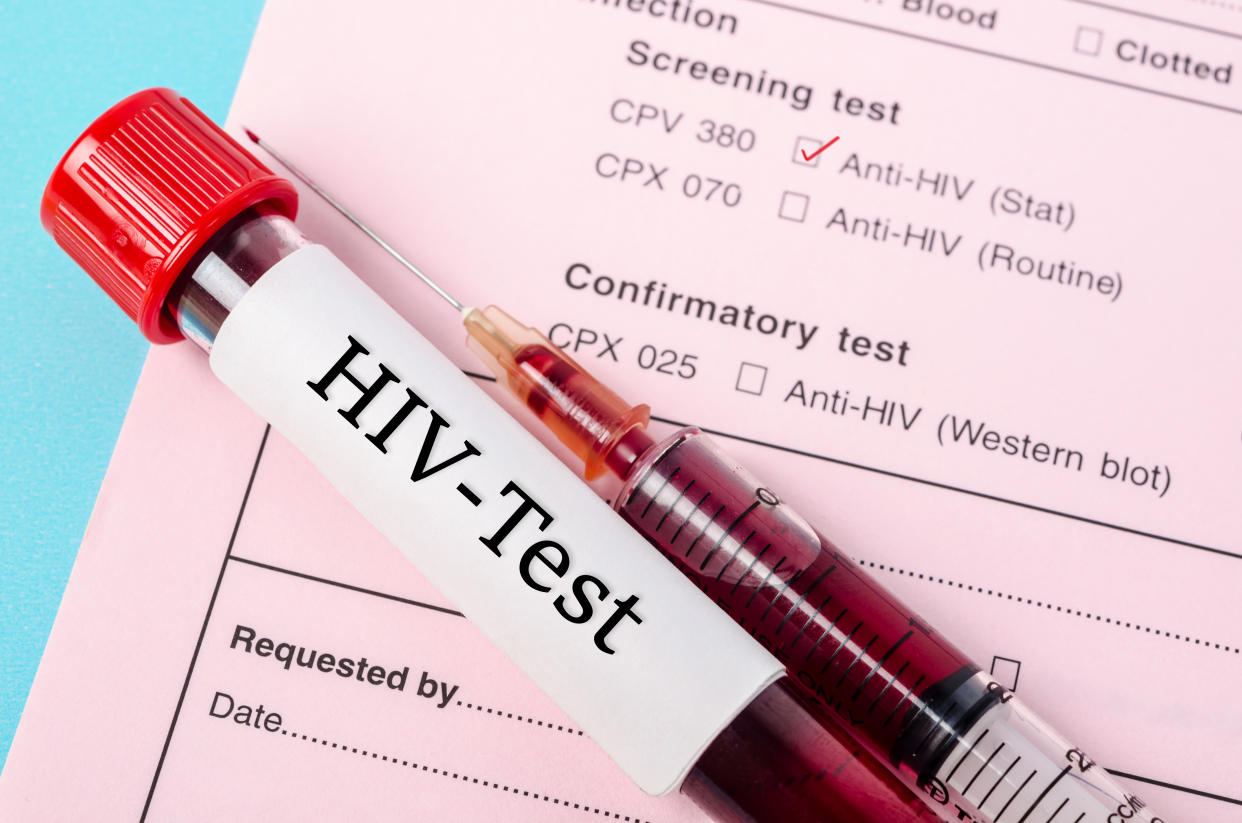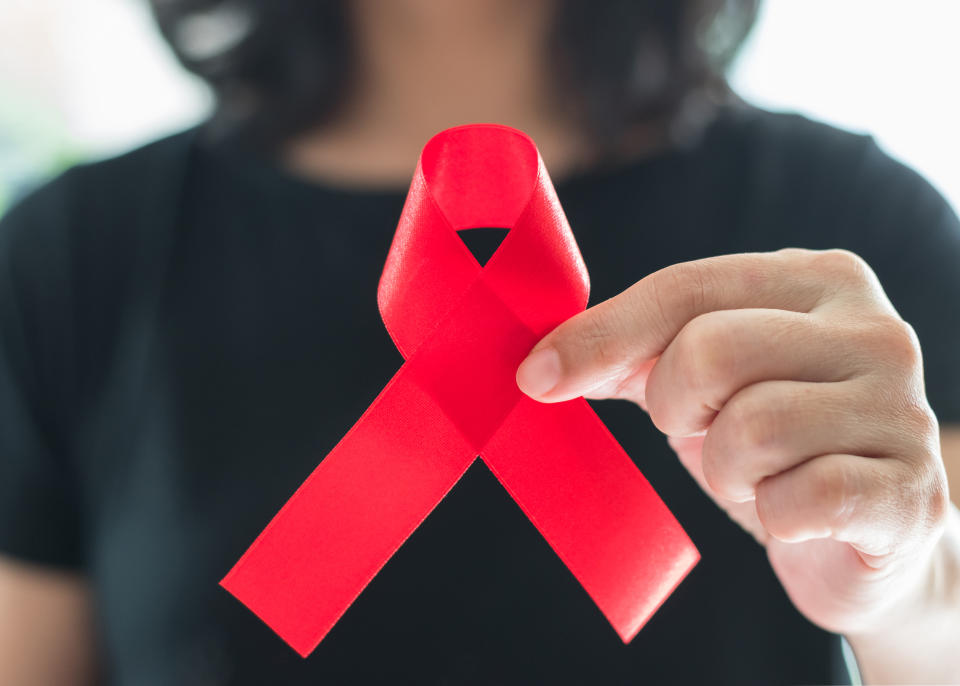Second patient 'cured' of HIV after a stem cell transplant

A second human immunodeficiency virus (HIV) patient is thought to be “cured” after undergoing a stem cell transplant.
Adam Castillejo, 40, from London, was transfused with the HIV-resistant gene CCR5 in May 2016 after developing advanced lymphoma as a result of the infection.
Thirty months after stopping antiretroviral therapy, which reduces HIV to an “undetectable level”, University of Cambridge scientists have found no “active viral infection” in his blood.
Read more: Half of women diagnosed with HIV in Europe are already progressing towards Aids
“We propose these results represent the second ever case of a patient to be cured of HIV,” said lead author Professor Ravindra Kumar Gupta.
“Our findings show the success of stem cell transplantation as a cure for HIV, first reported nine years ago in the ‘Berlin patient’, can be replicated”.
Stem cells are basic cells that can change into a more specialised form of cell.
The transplant left the HIV virus unable to replicate in Castillejo’s body by replacing his immune cells with those of a donor.
Is HIV ‘curable’?
Although HIV is considered “incurable”, a daily dose of antiretroviral therapy enables patients to live “longer, healthier” lives, while reducing the risk they will pass the virus on via unprotected sex.
The goal of the therapy is to lower a patient’s viral load to an undetectable level, meaning the quantity of the virus in their blood is too low to be picked up in a test.
These patients have “effectively no risk of transmitting HIV to their HIV-negative partners through sex”.
HIV damages immune cells, preventing them fighting off everyday infections, like colds.
Nearly all (97%) patients on antiretroviral therapy in the UK are “virally suppressed”, National AIDS Trust statistics show.
Left untreated, HIV can develop into acquired immune deficiency syndrome, more commonly known as Aids.
This occurs when the immune system is so severely damaged, the patient is at risk of life-threatening infections and diseases.
A stem cell transplant was therefore suggested for patients requiring a “last resort”.
In 2011, Timothy Ray Brown – the “Berlin patient” – became the first HIV case to be reported as “cured” three-and-a-half years after a similar procedure.
He endured “total body irradiation”, a form of radiotherapy that suppresses the immune system, reducing the risk a transplant will be “rejected”.
Brown also went through two rounds of stem cell transplants from a donor carrying the HIV-resistant gene.
Finally, he had chemotherapy. Combined with the radiotherapy, the chemo killed off any residual HIV viruses.
Read more: TV medic Dr Ranj takes an HIV test live on This Morning
In contrast, Castillejo – previously known as the “London patient” – had one stem cell transplant and a “reduced-intensity chemotherapy drug regimen”, with no radiotherapy.
He was reported as in remission last year.
Thirty months after coming off antiretroviral therapy, no “active viral infection” was detected in Castillejo’s blood, according to a paper in The Lancet HIV.
At 29 months, the infection was not identified in his spinal fluid, or intestinal or lymph tissue.
Castillejo’s immune cell count was found to be healthy, with 99% “derived from the donor’s stem cells”.
Using a mathematical model, the scientists estimated the probability he had been cured.
They predicted if 80% of Castillejo’s immune cells had been derived from the transplant, the probability of a cure would be 98%.
If 90% of the cells were derived from the donor, they estimated the probability of a cure rises to 99%.
Like Brown, Castillejo was found to have remnants of “integrated HIV-1 DNA” in his tissue samples.
The Cambridge scientists dismissed these as “fossils” of the infection and unlikely able to reproduce the virus.

Who is the second patient to be ‘cured’ of HIV?
Castillejo revealed his identity to the New York Times in order to be an “ambassador of hope” for other HIV patients.
The Venezuela-native arrived in London in 2002. He was diagnosed with HIV the following year, aged 23.
He was later diagnosed with stage four lymphoma, “another death sentence”, in 2011. Castillejo sunk so low he even considered going to Dignitas.
Although he pulled through, doctors warned he would unlikely make it past 2015.
Searching online, Castillejo came across UK doctors who suggested a transplant could cure his HIV and cancer. He had the procedure on 13 May 2016.
The next year was brutal, with Castillejo enduring multiple infections, hearing loss and mouth ulcers so severe he was barely able to take his HIV drugs.
After months in hospital, he was eventually discharged and took his last set of antiretroviral therapy in October 2017.
Although the second transplant has been deemed a success, the Cambridge scientists stress the procedure is not for everyone.
“It is important to note this curative treatment is high-risk and only used as a last resort for patients with HIV who also have life-threatening haematological malignancies [cancers of the blood, bone marrow and lymph nodes],” said Professor Kumar Gupta.
“Therefore, this is not a treatment that would be offered widely to patients with HIV who are on successful antiretroviral treatment.”
Read more: Two clients were diagnosed with HIV following 'vampire facials'
Nevertheless, Castillejo required less intensive treatment than Brown, suggesting HIV remission could be achieved with a “milder” drug regimen.
With the treatment still experimental, Castillejo will require continuous monitoring for re-emergence of the virus, the scientists added.
“Gene editing using the CCR5 [gene] has received a lot of attention recently,” said study author Dr Dimitra Peppa from the University of Oxford.
“The London and Berlin patients are examples of using the CCR5 gene in curative therapies outside of gene editing.
“There are still many ethical and technical barriers – e.g. gene editing, efficiency and robust safety data – to overcome before any approach using CCR5 gene editing can be considered as a scalable cure strategy for HIV.”
‘Only time will tell’ if patients truly ‘cured’
“The finding of no intact virus can be reassuring for a patient who might face significant anxiety and uncertainty about whether and when viral rebound off antiretroviral therapy might occur, which in other settings has been completely unpredictable,” said Professor Sharon Lewin, from the University of Melbourne.
“Given the large number of cells sampled here and the absence of any intact virus, is the London patient truly cured?
“The additional data provided in this follow-up case report is certainly encouraging but unfortunately in the end, only time will tell.”
Others experts were optimistic, but agreed the gruelling treatment will be unsuitable for most.
“The investigators have performed a meticulous study to detect evidence of residual HIV virus in multiple body tissues and fluids, but have found none at all,” said Dr Andrew Freeman, from Cardiff University.
“Although further longer term follow-up will be required, it does seem highly likely this is the second ever patient to be cured of HIV, after the Berlin patient.
“As the authors state, such treatment is not suitable for the millions of people infected worldwide.
“They need to continue long term antiretroviral drug therapy, which is highly effective in reducing morbidity and mortality, as well as preventing onward transmission.
“Work such as this is nevertheless important in the development of cure strategies that may be more widely applicable.”
Dr Jonathan Stoye, from The Francis Crick Institute, added the results “will certainly be reassuring” for Castillejo.
“However, I am not persuaded we now know significantly more about [the] HIV cure than we did following the initial report on this patient a year ago”, he said.



